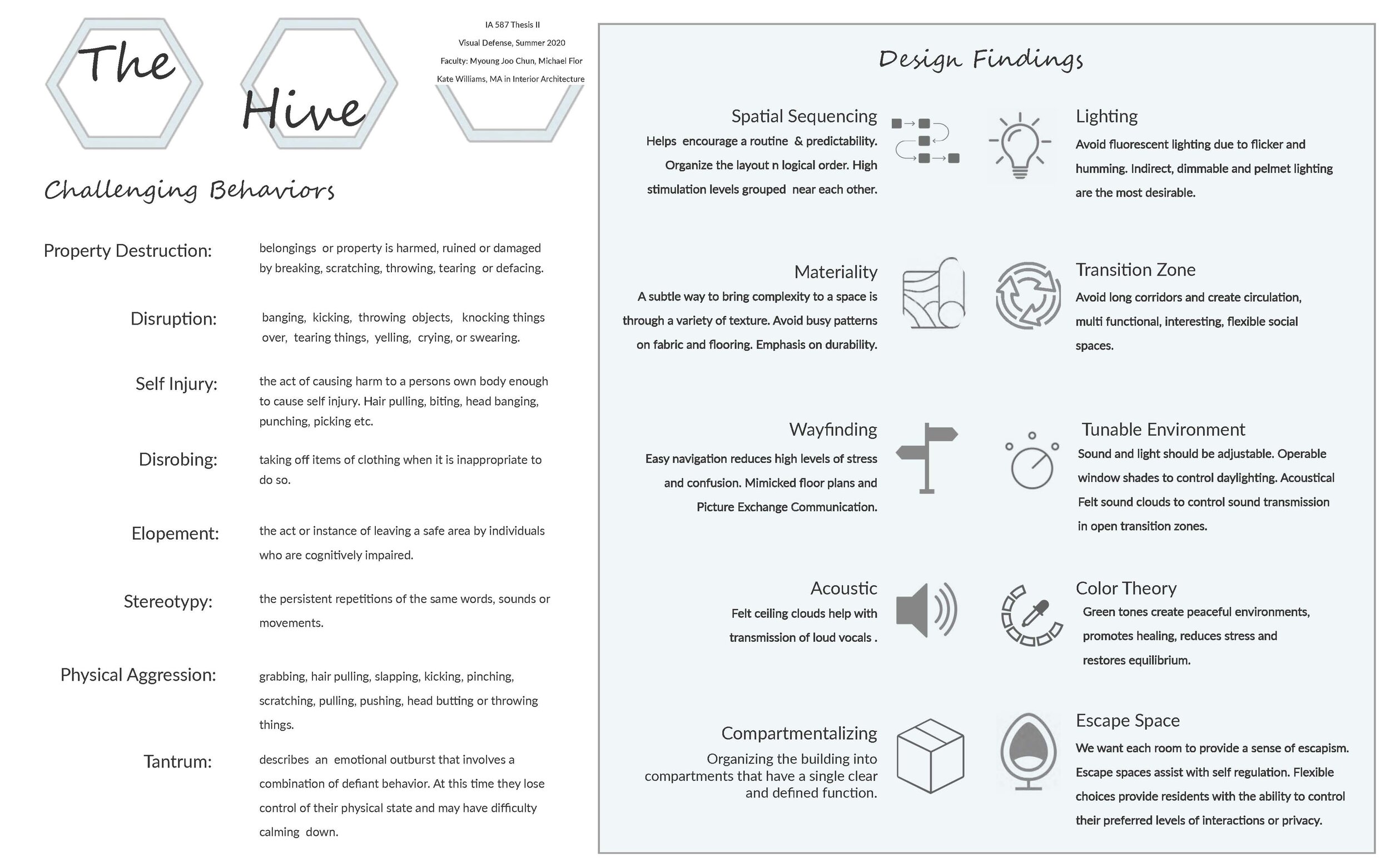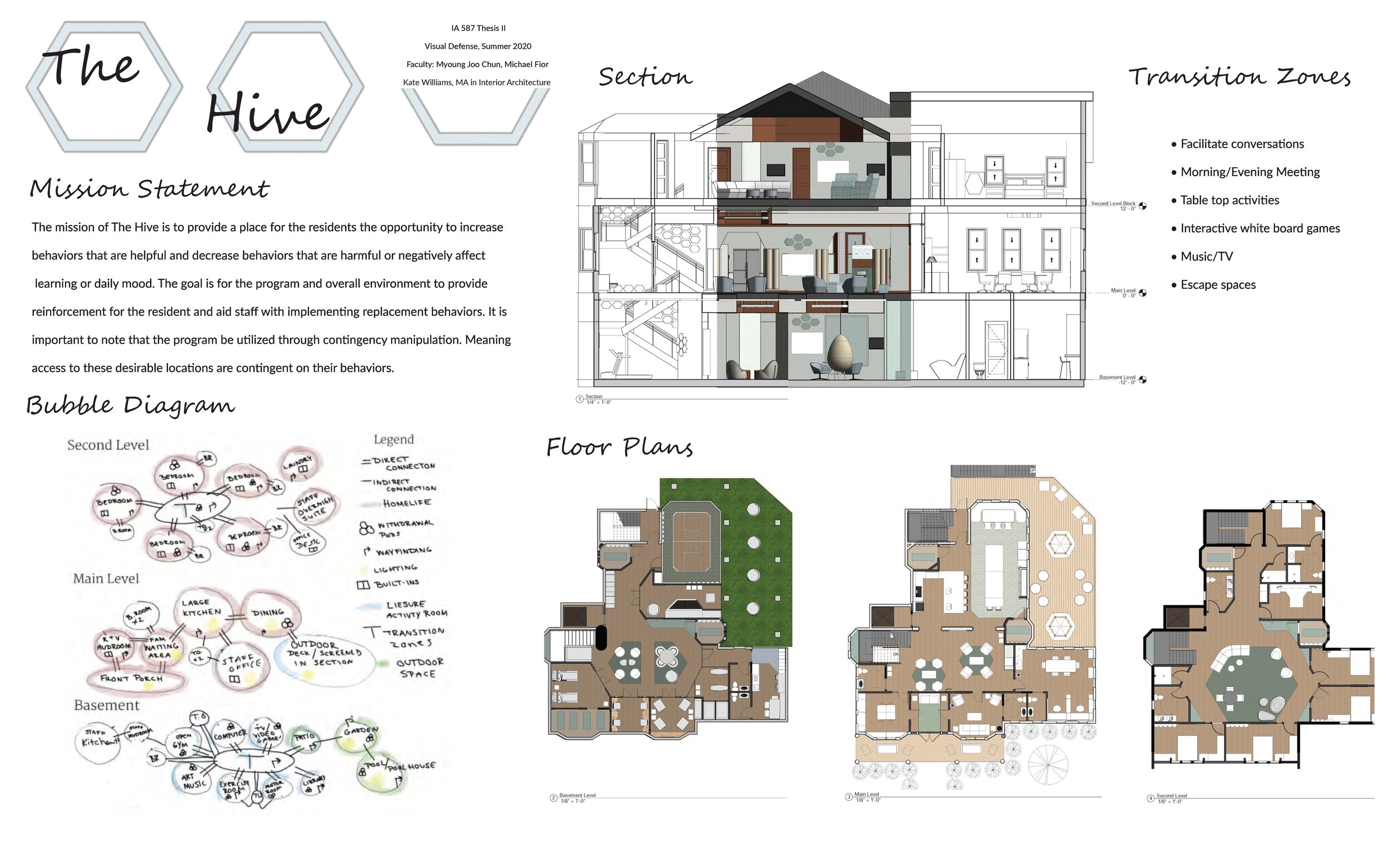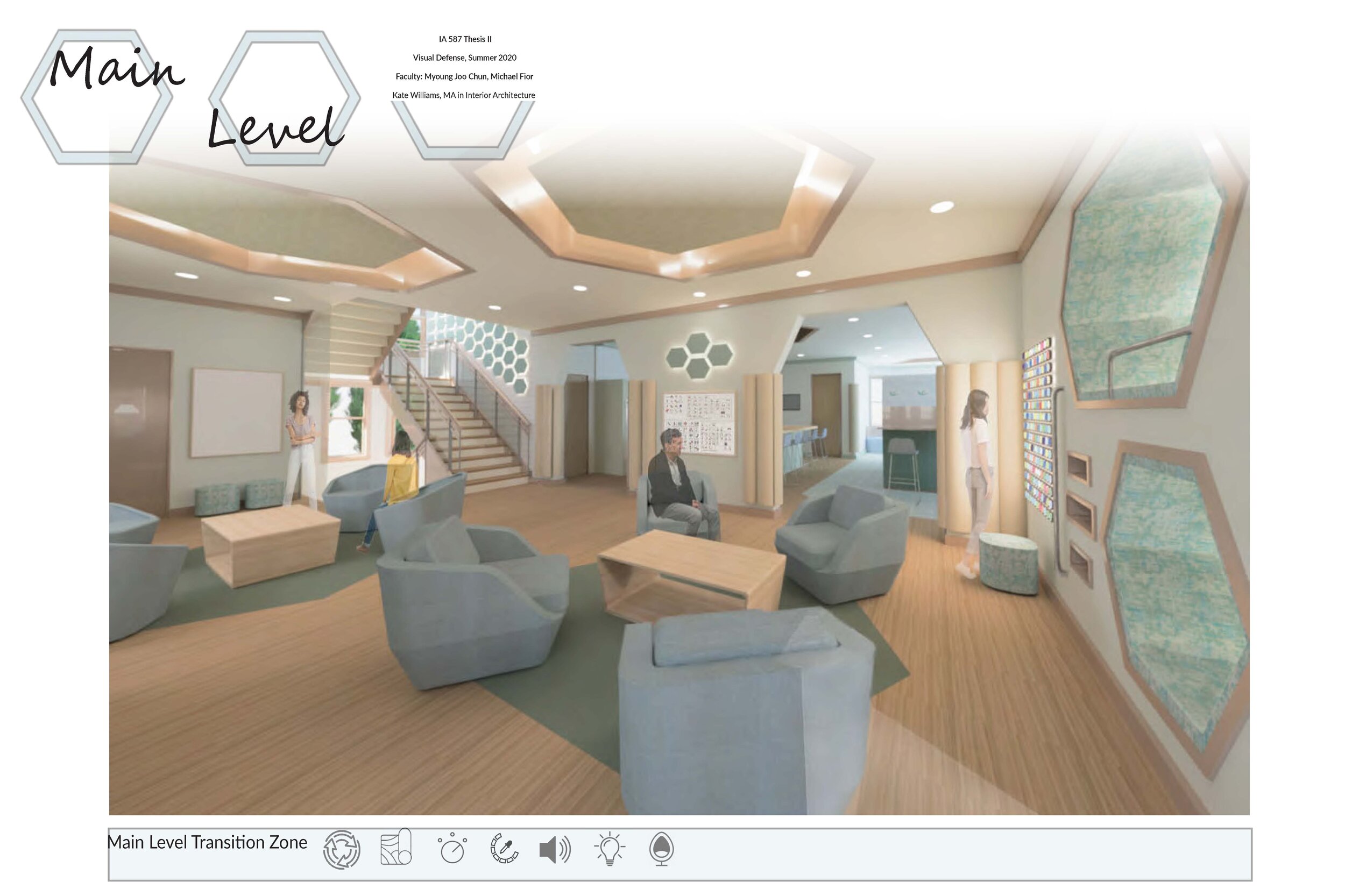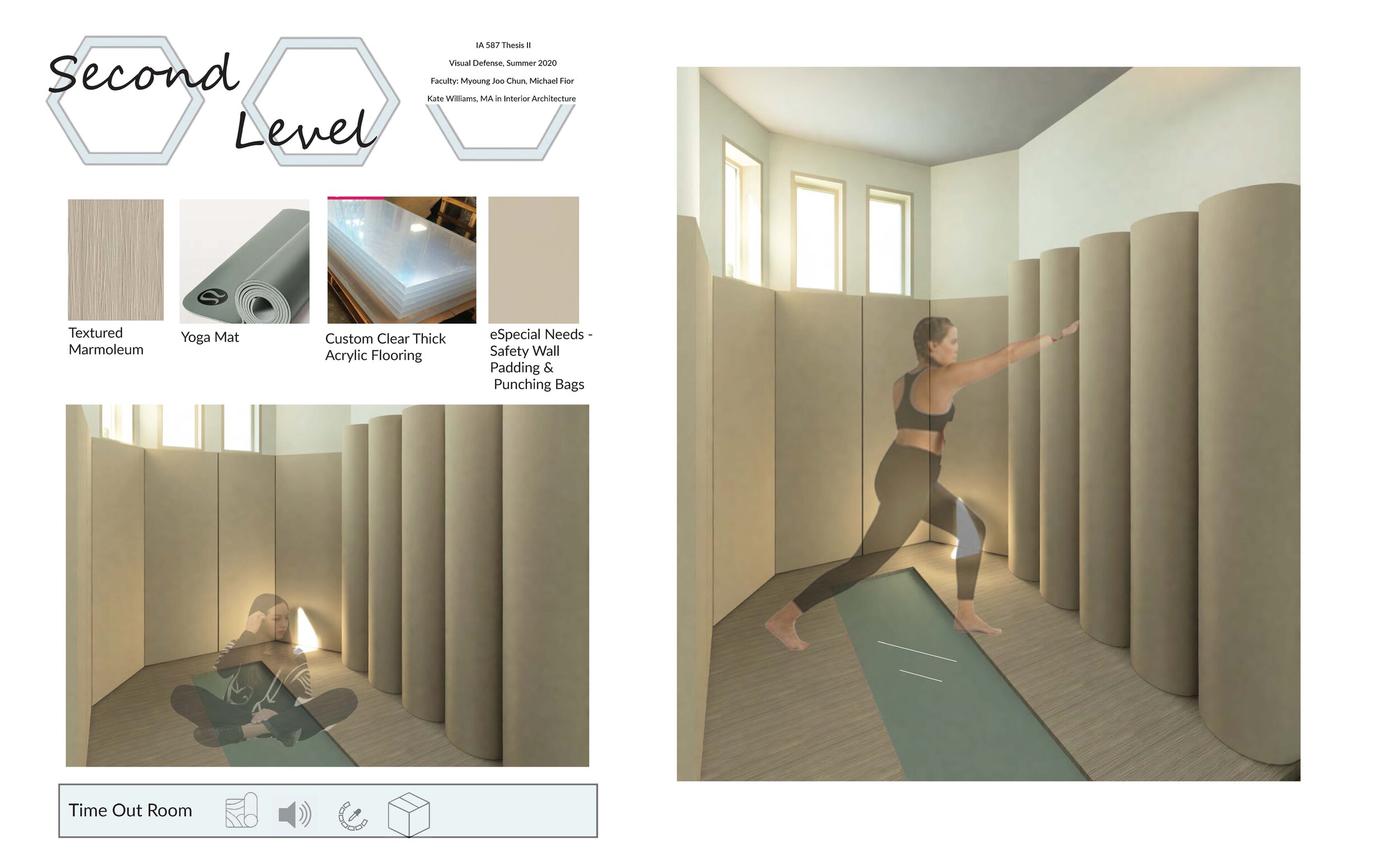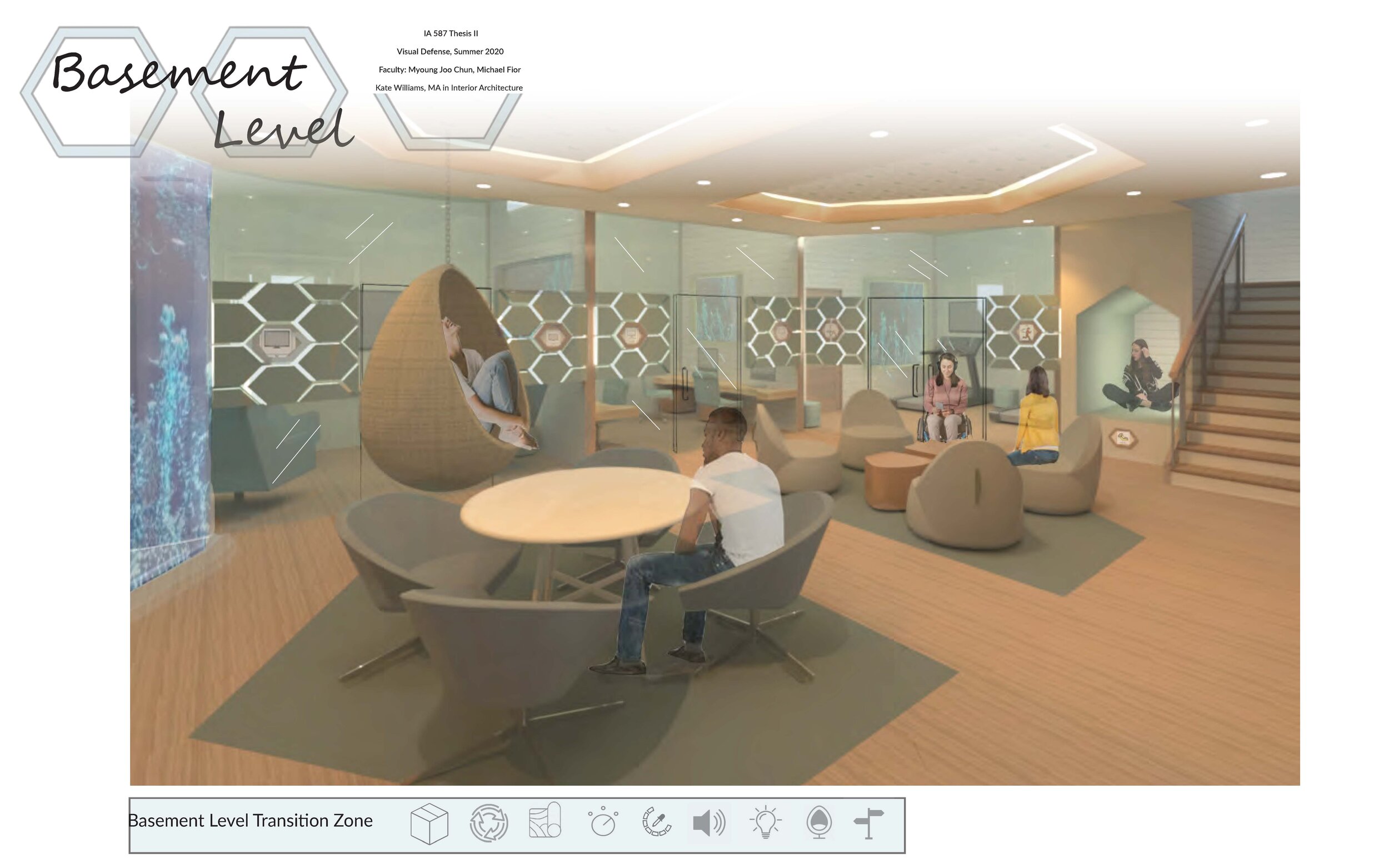Artist Statement
As a former teacher of Applied Behavior Analysis (ABA) the idea of combining my two passions, Interior Design and my previous work experience was more than a dream come true. I spent the last seven years working with individuals with special needs and other developmental delays. The most rewarding part of this line of work is that everyday was an opportunity for these individuals to reach their full potential. This project allowed me to bring to life the running log I have created over the course of my career, as well as a deeper understanding of research regarding the environment and how it can benefit and support both the residents and the staff.
Thesis Abstract
In 2016, it was reported that the prevalence of autism diagnosis per 1,000 children born in 2008 was 1 in 54. This number has tripled in size over the past 16 years and is on the rise. Autism is a “spectrum disorder” that consists of three levels based on the rate, type and severity of behaviors. Level 3 autism is the most severe diagnosis and requires a substantial amount of day to day support.
The design will take into account all sensory integration and additional processing difficulties as a way to reduce challenging behavior. Lower levels of challenging behavior will create a lifestyle in which these individuals are able to thrive. The design will invoke freedom, creativity, privacy, individuality, self-control, environmental control & social control, while aiming to effectively break the chain of challenging behaviors that would otherwise lead to tantrum criteria.
The impact of challenging behavior can be detrimental to individual progress, happiness, and independence. When challenging behavior occurs it interrupts learning opportunities, reduces independence, limits choices and social experiences with peers, causes depression, stress, anxiety, and physical pain to themselves or others. There can also be negative long term impacts on relationships with parents, siblings, and other family members.

